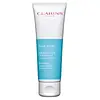What's inside
What's inside
 Benefits
Benefits

 Concerns
Concerns

 Ingredients Side-by-side
Ingredients Side-by-side

Water
Skin ConditioningMicrocrystalline Cellulose
AbsorbentSd Alcohol 40-B
AstringentCellulose
AbsorbentDipropylene Glycol
HumectantHydrolyzed Corn Starch
HumectantGlycerin
HumectantDimethicone
EmollientCetyl Ethylhexanoate
EmollientPhenoxyethanol
PreservativeCarbomer
Emulsion StabilisingHydroxypropyl Methylcellulose
Emulsion StabilisingParfum
MaskingBetaine
HumectantPotassium Hydroxide
BufferingAcrylates/C10-30 Alkyl Acrylate Crosspolymer
Emulsion StabilisingXanthan Gum
EmulsifyingLimonene
PerfumingHexyl Cinnamal
PerfumingButylphenyl Methylpropional
PerfumingSodium Metaphosphate
BufferingDisodium EDTA
Hydrogenated Lecithin
EmulsifyingCI 77492
Cosmetic ColorantWater, Microcrystalline Cellulose, Sd Alcohol 40-B, Cellulose, Dipropylene Glycol, Hydrolyzed Corn Starch, Glycerin, Dimethicone, Cetyl Ethylhexanoate, Phenoxyethanol, Carbomer, Hydroxypropyl Methylcellulose, Parfum, Betaine, Potassium Hydroxide, Acrylates/C10-30 Alkyl Acrylate Crosspolymer, Xanthan Gum, Limonene, Hexyl Cinnamal, Butylphenyl Methylpropional, Sodium Metaphosphate, Disodium EDTA, Hydrogenated Lecithin, CI 77492
Water
Skin ConditioningCellulose
AbsorbentSqualane
EmollientButylene Glycol
HumectantCaprylic/Capric Triglyceride
MaskingPropanediol
SolventGlycerin
HumectantAmmonium Acryloyldimethyltaurate/Vp Copolymer
Acrylates/C10-30 Alkyl Acrylate Crosspolymer
Emulsion StabilisingPhenoxyethanol
PreservativeHydroxyethyl Acrylate/Sodium Acryloyldimethyl Taurate Copolymer
Emulsion StabilisingParfum
MaskingEthylhexylglycerin
Skin ConditioningSodium Hydroxide
BufferingMicrocrystalline Cellulose
AbsorbentDisodium EDTA
Kalanchoe Pinnata Leaf Extract
MaskingBiosaccharide Gum-4
Skin ConditioningCitric Acid
BufferingSodium Benzoate
MaskingPotassium Sorbate
PreservativeCI 42090
Cosmetic ColorantWater, Cellulose, Squalane, Butylene Glycol, Caprylic/Capric Triglyceride, Propanediol, Glycerin, Ammonium Acryloyldimethyltaurate/Vp Copolymer, Acrylates/C10-30 Alkyl Acrylate Crosspolymer, Phenoxyethanol, Hydroxyethyl Acrylate/Sodium Acryloyldimethyl Taurate Copolymer, Parfum, Ethylhexylglycerin, Sodium Hydroxide, Microcrystalline Cellulose, Disodium EDTA, Kalanchoe Pinnata Leaf Extract, Biosaccharide Gum-4, Citric Acid, Sodium Benzoate, Potassium Sorbate, CI 42090
Ingredients Explained
These ingredients are found in both products.
Ingredients higher up in an ingredient list are typically present in a larger amount.
Acrylates/C10-30 Alkyl Acrylate Crosspolymer is a synthetic polymer. It is used to thicken and improve the texture of products. Due to its properties, it can prevent water and oil ingredients from separating.
Cellulose is the main component of plant cell walls. It is used as an emulsifier, absorbent, and texture enhancer.
This ingredient has many functions:
Fun fact: Cellulose is the most abundant form of organic polymer on Earth.
Learn more about CelluloseDisodium EDTA plays a role in making products more stable by aiding other preservatives.
It is a chelating agent, meaning it neutralizes metal ions that may be found in a product.
Disodium EDTA is a salt of edetic acid and is found to be safe in cosmetic ingredients.
Learn more about Disodium EDTAGlycerin is already naturally found in your skin. It helps moisturize and protect your skin.
A study from 2016 found glycerin to be more effective as a humectant than AHAs and hyaluronic acid.
As a humectant, it helps the skin stay hydrated by pulling moisture to your skin. The low molecular weight of glycerin allows it to pull moisture into the deeper layers of your skin.
Hydrated skin improves your skin barrier; Your skin barrier helps protect against irritants and bacteria.
Glycerin has also been found to have antimicrobial and antiviral properties. Due to these properties, glycerin is often used in wound and burn treatments.
In cosmetics, glycerin is usually derived from plants such as soybean or palm. However, it can also be sourced from animals, such as tallow or animal fat.
This ingredient is organic, colorless, odorless, and non-toxic.
Glycerin is the name for this ingredient in American English. British English uses Glycerol/Glycerine.
Learn more about GlycerinMicrocrystalline Cellulose is another name for refined wood pulp. It is used as an emulsifier and mattifying ingredient. As an emulsifier, it helps keep ingredients together.
Parfum is a catch-all term for an ingredient or more that is used to give a scent to products.
Also called "fragrance", this ingredient can be a blend of hundreds of chemicals or plant oils. This means every product with "fragrance" or "parfum" in the ingredients list is a different mixture.
For instance, Habanolide is a proprietary trade name for a specific aroma chemical. When used as a fragrance ingredient in cosmetics, most aroma chemicals fall under the broad labeling category of “FRAGRANCE” or “PARFUM” according to EU and US regulations.
The term 'parfum' or 'fragrance' is not regulated in many countries. In many cases, it is up to the brand to define this term.
For instance, many brands choose to label themselves as "fragrance-free" because they are not using synthetic fragrances. However, their products may still contain ingredients such as essential oils that are considered a fragrance by INCI standards.
One example is Calendula flower extract. Calendula is an essential oil that still imparts a scent or 'fragrance'.
Depending on the blend, the ingredients in the mixture can cause allergies and sensitivities on the skin. Some ingredients that are known EU allergens include linalool and citronellol.
Parfum can also be used to mask or cover an unpleasant scent.
The bottom line is: not all fragrances/parfum/ingredients are created equally. If you are worried about fragrances, we recommend taking a closer look at an ingredient. And of course, we always recommend speaking with a professional.
Learn more about ParfumPhenoxyethanol is a preservative that has germicide, antimicrobial, and aromatic properties. Studies show that phenoxyethanol can prevent microbial growth. By itself, it has a scent that is similar to that of a rose.
It's often used in formulations along with Caprylyl Glycol to preserve the shelf life of products.
Water. It's the most common cosmetic ingredient of all. You'll usually see it at the top of ingredient lists, meaning that it makes up the largest part of the product.
So why is it so popular? Water most often acts as a solvent - this means that it helps dissolve other ingredients into the formulation.
You'll also recognize water as that liquid we all need to stay alive. If you see this, drink a glass of water. Stay hydrated!
Learn more about Water